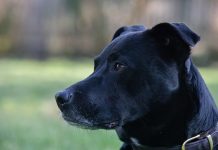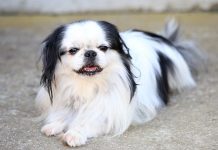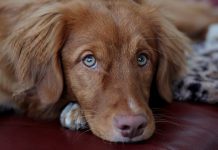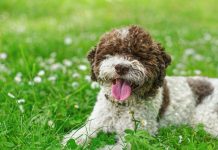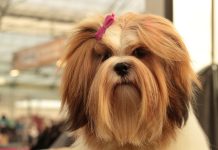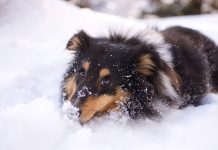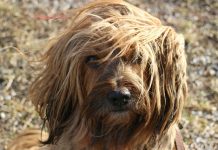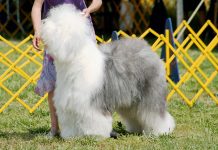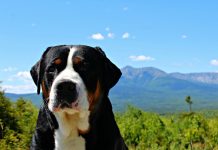History and Origins of the Afghan Hound Breed

The Afghan Hound is an ancient and elegant breed with a rich history that dates back thousands of years. Here’s a glimpse into the captivating history and origins of the Afghan Hound:
- Ancient Roots: The Afghan Hound is one of the oldest dog breeds in existence, with origins tracing back to the mountains of Afghanistan and surrounding regions. This breed’s lineage can be traced as far back as 4,000 years ago.
- Hunting Heritage: Afghan Hounds were originally bred by nomadic tribes in Afghanistan to assist in hunting large game, such as deer, leopards, and even wolves. Their impressive speed, agility, and keen eyesight made them well-suited for these tasks.
- Breed Development: Over centuries of selective breeding, Afghan Hounds developed their distinctive appearance and regal bearing. They were highly prized by Afghan nobility and aristocrats, who valued them not only for their hunting prowess but also for their beauty and grace.
- Introduction to the West: Afghan Hounds were introduced to the Western world in the early 20th century when British officers and soldiers stationed in Afghanistan brought these magnificent dogs back to Europe. The breed quickly gained popularity among dog enthusiasts and eventually made its way to other parts of the world.
- Breed Standardization: The breed was officially recognized by the American Kennel Club (AKC) in 1926 and by The Kennel Club (UK) shortly afterward. The breed standard emphasizes the Afghan Hound’s unique appearance, including its long, flowing coat and distinctive silhouette.
Physical Characteristics and Appearance of Afghan Hounds
The Afghan Hound is celebrated for its striking appearance and aristocratic bearing. Here are the key physical characteristics and features of Afghan Hounds:
- Size: Afghan Hounds are large and graceful dogs, standing approximately 25 to 27 inches (63 to 68 cm) tall at the shoulder for males, and slightly smaller for females.
- Build: They have a slim yet sturdy build, with a deep chest and strong, arched loin. Their long legs contribute to their impressive speed and agility.
- Coat: Afghan Hounds are renowned for their long, silky coat that flows gracefully and gives them a majestic appearance. The coat can come in various colors, including cream, red, black, blue, brindle, and a combination of these colors.
- Head: Afghan Hounds have a distinctive long, narrow head with a slight convex profile. They have a prominent topknot of silky hair on the head and fine, feathered ears that hang close to the skull.
- Eyes: Their almond-shaped eyes are dark and expressive, giving them a thoughtful and intelligent expression.
- Tail: Afghan Hounds have a long, bushy tail that curls gracefully over their back when in motion.
- Gait: Afghan Hounds move with a smooth and effortless gait, covering ground with elegance and grace. Their movement is described as light and springy.
- Temperament: Afghan Hounds are known for their aloof and independent temperament. They are dignified, intelligent, and often reserved with strangers, but loyal and affectionate with their families.
Afghan Hounds require regular grooming to maintain their luxurious coat and benefit from moderate exercise to keep them fit and healthy. Their unique appearance and noble demeanor make them a captivating and cherished breed among dog lovers worldwide.
Afghan Hound Temperament and Personality Traits
- Independent: Afghan Hounds are known for their independent nature. They are not typically clingy or overly dependent on constant attention from their owners.
- Aloof with Strangers: Afghan Hounds can be reserved and aloof with strangers. They are naturally cautious and may take time to warm up to new people.
- Loyal and Affectionate: Despite their independent demeanor, Afghan Hounds form strong bonds with their families and are loyal and affectionate companions.
- Intelligent and Sensitive: Afghan Hounds are intelligent dogs but can also be sensitive to their owner’s moods and emotions. They respond well to positive reinforcement training methods.
- Curious and Alert: Afghan Hounds have a natural curiosity and keen sense of awareness. They are attentive dogs that enjoy exploring their surroundings.
- Playful and Active: Afghan Hounds have a playful side, especially when young. They enjoy engaging in games and activities that stimulate their minds and bodies.
- Dignified and Regal: Afghan Hounds carry themselves with dignity and grace. They have a regal presence and are often compared to aristocrats among dog breeds.
- Prey Drive: Afghan Hounds have a strong instinct for chasing small animals due to their history as hunting dogs. They may not be suitable for households with small pets unless properly trained and socialized.
Training and Exercise Needs for Afghan Hounds
- Early Socialization: Start socializing your Afghan Hound puppy early to expose them to different people, animals, and environments. This helps prevent shyness or fearfulness later on.
- Positive Reinforcement Training: Afghan Hounds respond best to positive reinforcement training methods. Use treats, praise, and rewards to motivate and encourage desired behaviors.
- Consistency and Patience: Afghan Hounds can be independent-minded and may require patience during training sessions. Be consistent, firm, and patient in your approach.
- Basic Obedience Commands: Teach your Afghan Hound basic obedience commands such as sit, stay, come, and heel. Practice these commands regularly in different settings.
- Exercise Requirements: Afghan Hounds are active dogs that require regular exercise to stay mentally and physically healthy. They enjoy daily walks, runs in a securely fenced area, or engaging in canine sports like lure coursing.
- Leash Training: Afghan Hounds have a strong prey drive and may be prone to chasing small animals. It’s important to leash train them and use a secure leash and harness during walks.
- Grooming Needs: Afghan Hounds have a long, silky coat that requires regular grooming to prevent mats and tangles. Brush their coat several times a week and schedule regular baths and trimming as needed.
- Cognitive Stimulation: Provide mental stimulation for your Afghan Hound through interactive toys, puzzle games, and training sessions. They enjoy activities that challenge their intelligence and problem-solving skills.
- Supervision and Safety: Due to their independent nature and prey drive, Afghan Hounds should be supervised in outdoor areas and kept in a secure environment to prevent escapes.
By understanding and accommodating the unique temperament and needs of Afghan Hounds, you can develop a strong bond and provide them with a fulfilling and enriching life. Consistent training, regular exercise, and positive reinforcement are key to raising a well-behaved and happy Afghan Hound companion.
Health Considerations and Common Issues in Afghan Hounds
- Hip Dysplasia: This is a common orthopedic condition where the hip joint doesn’t develop properly, leading to arthritis and lameness. Regular exercise and maintaining a healthy weight can help reduce the risk of hip dysplasia.
- Elbow Dysplasia: Similar to hip dysplasia, elbow dysplasia is a developmental abnormality of the elbow joint that can cause lameness and arthritis.
- Progressive Retinal Atrophy (PRA): This is a group of genetic eye diseases that can lead to vision loss and blindness. Regular eye examinations by a veterinary ophthalmologist are recommended for Afghan Hounds.
- Cancer: Afghan Hounds may be susceptible to certain types of cancer, including lymphoma and hemangiosarcoma. Early detection and veterinary care are important for managing cancer in dogs.
- Bloat (Gastric Dilatation-Volvulus): Afghan Hounds, like many deep-chested breeds, are prone to bloat, a life-threatening condition where the stomach twists and fills with gas. Feeding multiple small meals a day and avoiding vigorous exercise after meals can help reduce the risk of bloat.
- Hypothyroidism: Afghan Hounds may develop hypothyroidism, a condition where the thyroid gland does not produce enough hormones. Symptoms include weight gain, lethargy, and skin problems.
- Heart Disease: Some Afghan Hounds may be prone to heart conditions such as dilated cardiomyopathy (DCM) and mitral valve disease. Regular veterinary check-ups and diagnostic testing can help monitor heart health.
- Dermatological Issues: Afghan Hounds are susceptible to skin allergies and dermatitis. Regular grooming, proper diet, and veterinary care can help manage skin problems.
Living with an Afghan Hound: Suitable Environments and Lifestyle Considerations

- Indoor Living: Afghan Hounds can adapt well to indoor living, provided they have sufficient space to move around and regular opportunities for exercise. They enjoy comfortable indoor environments with soft bedding.
- Exercise Requirements: Afghan Hounds are active dogs that require regular exercise to stay physically and mentally healthy. Daily walks, runs in a securely fenced area, or participation in canine sports like lure coursing are beneficial for their well-being.
- Grooming: Afghan Hounds have a long, silky coat that requires regular grooming to prevent mats and tangles. Brush their coat several times a week and schedule professional grooming as needed.
- Safety Precautions: Afghan Hounds have a strong prey drive and may chase small animals. They should be supervised in outdoor areas and kept on a leash to prevent escapes.
- Socialization: Early socialization is important for Afghan Hounds to develop good behavior and confidence around people and other animals. Expose them to various environments and experiences from a young age.
- Nutrition: Feed your Afghan Hound a high-quality diet appropriate for their age, size, and activity level. Monitor their food intake to prevent obesity, which can exacerbate certain health issues.
- Regular Veterinary Care: Schedule regular veterinary check-ups, vaccinations, and preventive care to monitor your Afghan Hound’s health and address any concerns promptly.
- Companionship: Afghan Hounds thrive on companionship and may experience separation anxiety if left alone for long periods. Provide plenty of attention, interaction, and mental stimulation to keep them happy and well-adjusted.
By providing proper care, exercise, and attention to their health needs, you can ensure a happy and fulfilling life for your Afghan Hound companion. Regular veterinary care, early detection of health issues, and a loving environment are essential for maximizing their lifespan and quality of life.
Afghan Hound Variations and Breeding Practices
Afghan Hounds, known for their elegant appearance and graceful demeanor, have certain variations in their characteristics and coat colors. While the breed standard emphasizes specific qualities, such as coat texture and color, responsible breeding practices are essential for maintaining the health and integrity of Afghan Hounds. Here’s an overview of Afghan Hound variations and common breeding practices associated with this captivating breed:
Afghan Hound Variations
- Coat Color: Afghan Hounds come in various colors and patterns, including:
- Cream
- Red
- Blue
- Black
- Brindle
- White markings on the chest and feet
- Sable
Breed standards may specify acceptable colors and markings for show dogs, but all variations are beautiful representations of the breed.
- Coat Texture: Afghan Hounds have a distinctive long, silky coat that can vary in texture. The coat should be fine and glossy, with a soft undercoat. Some Afghan Hounds have a slightly wavy or curly coat, particularly on the ears and tail.
- Size: Afghan Hounds are a medium to large breed, with males typically standing around 27 inches (68 cm) tall at the shoulder and females slightly smaller. There can be variations in size within the breed, but Afghan Hounds generally have a slim and athletic build.
Breeding Practices
Responsible breeding practices are crucial for preserving the health, temperament, and beauty of Afghan Hounds. Here are some common breeding practices associated with this breed:
- Health Testing: Ethical breeders conduct health screenings for genetic conditions that may affect Afghan Hounds, such as hip dysplasia, progressive retinal atrophy (PRA), and autoimmune disorders. They use these tests to select breeding pairs with good health and genetic diversity.
- Pedigree Analysis: Breeders study the pedigrees of potential breeding dogs to understand their lineage and genetic background. They aim to avoid inbreeding and select breeding pairs that complement each other in terms of health, temperament, and conformation.
- Conformation to Breed Standard: Afghan Hound breeders strive to produce dogs that conform to the breed standard set by kennel clubs such as the American Kennel Club (AKC) or The Kennel Club (UK). This includes specific requirements for coat color, texture, body proportions, and movement.
- Temperament Assessment: Responsible breeders prioritize breeding Afghan Hounds with stable and desirable temperaments. They aim to produce dogs that are confident, aloof with strangers but affectionate with their families, and have a natural elegance and grace.
- Ethical Placement of Puppies: Good breeders prioritize the welfare of their puppies and carefully screen potential owners to ensure they can provide a suitable and loving home. They offer support and guidance to puppy buyers throughout the dog’s life.
- Continued Education: Dedicated Afghan Hound breeders stay informed about developments in health, genetics, and breed standards. They participate in breed clubs and engage in continuing education to improve their breeding practices and contribute positively to the breed.
By following responsible breeding practices and focusing on health, temperament, and adherence to breed standards, Afghan Hound breeders contribute to the preservation and improvement of this ancient and noble breed. Prospective owners should seek reputable breeders who prioritize the welfare of their dogs and adhere to ethical breeding standards.
50 Best Names with Meanings for Afghan Hounds
Naming your Afghan Hound can be a meaningful and enjoyable experience, reflecting the elegance and regal nature of this beautiful breed. Here are 50 best names along with their meanings that could be perfect for your Afghan Hound companion:
- Zara – Princess; Persian origin.
- Rumi – From Jalāl ad-Dīn Muhammad Rūmī, a Persian poet; meaning “from Rome.”
- Sultan – Ruler or king; Arabic origin.
- Aria – Noble; Persian origin.
- Cyrus – Sun; Persian origin.
- Shiraz – City in Iran famous for wine; Persian origin.
- Samira – Entertaining companion; Arabic origin.
- Aslan – Lion; Turkish origin.
- Layla – Night; Arabic origin.
- Amir – Prince; Arabic origin.
- Jasmine – Fragrant flower; Persian origin.
- Sahara – Desert; Arabic origin.
- Farah – Happiness; Persian origin.
- Khan – Leader; Persian origin.
- Zephyr – Gentle breeze; Greek origin.
- Nadia – Hope; Russian origin.
- Saba – Morning breeze; Arabic origin.
- Sultan – Ruler; Arabic origin.
- Zahra – Flower; Persian origin.
- Caspar – Treasurer; Persian origin.
- Nala – Beloved; African origin.
- Ayla – Moonlight; Turkish origin.
- Azar – Fire; Persian origin.
- Tarik – Morning star; Arabic origin.
- Lila – Night; Arabic origin.
- Hakim – Wise; Arabic origin.
- Cairo – Victorious; Arabic origin.
- Marjan – Coral; Persian origin.
- Orion – Hunter; Greek origin.
- Soraya – Princess; Persian origin.
- Rajah – Prince; Sanskrit origin.
- Sahar – Dawn; Arabic origin.
- Roxana – Bright dawn; Persian origin.
- Taj – Crown; Persian origin.
- Jahan – World; Persian origin.
- Caspian – From the Caspian Sea; Persian origin.
- Kamran – Successful; Persian origin.
- Zain – Beautiful; Arabic origin.
- Niko – Victory; Greek origin.
- Ziva – Radiance; Hebrew origin.
- Cyrus – Sun; Persian origin.
- Ariana – Very holy one; Persian origin.
- Tara – Star; Sanskrit origin.
- Rumi – From the poet Rumi; Persian origin.
- Zal – Power; Persian origin.
- Firuzeh – Turquoise; Persian origin.
- Jasmine – Fragrant flower; Persian origin.
- Mahin – Like the moon; Persian origin.
- Nasim – Breeze; Persian origin.
- Shirin – Sweet; Persian origin.
Choose a name that resonates with your Afghan Hound’s personality, appearance, or the qualities you admire. Whether you prefer a name rooted in Persian culture, reflecting their graceful nature, or simply a name that sounds majestic and elegant, there’s a perfect fit waiting for your noble Afghan Hound companion!

In conclusion, this comprehensive guide to Afghan Hound dogs has provided a detailed exploration of this elegant and unique breed. Throughout our discussion, we’ve delved into the history, distinctive characteristics, and essential care considerations that define Afghan Hounds. Known for their regal appearance, graceful demeanor, and independent spirit, Afghan Hounds make captivating companions for experienced dog owners seeking a loyal and dignified pet. They require regular grooming and exercise to maintain their distinctive coat and thrive in a loving and stimulating environment. As you embark on your journey with an Afghan Hound, may you appreciate their unique qualities and form a strong bond with this remarkable breed, creating lasting companionship and fulfillment together.







